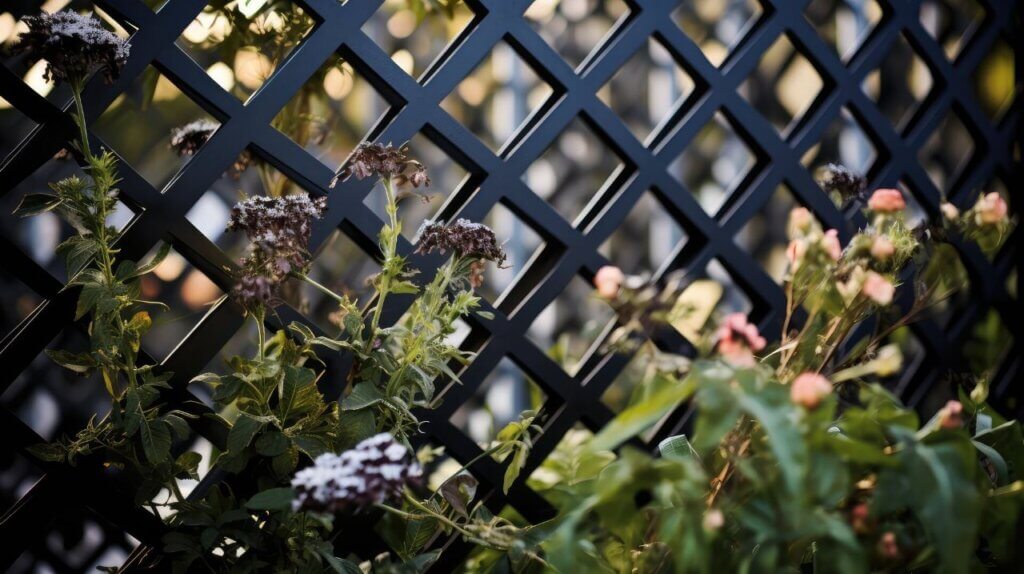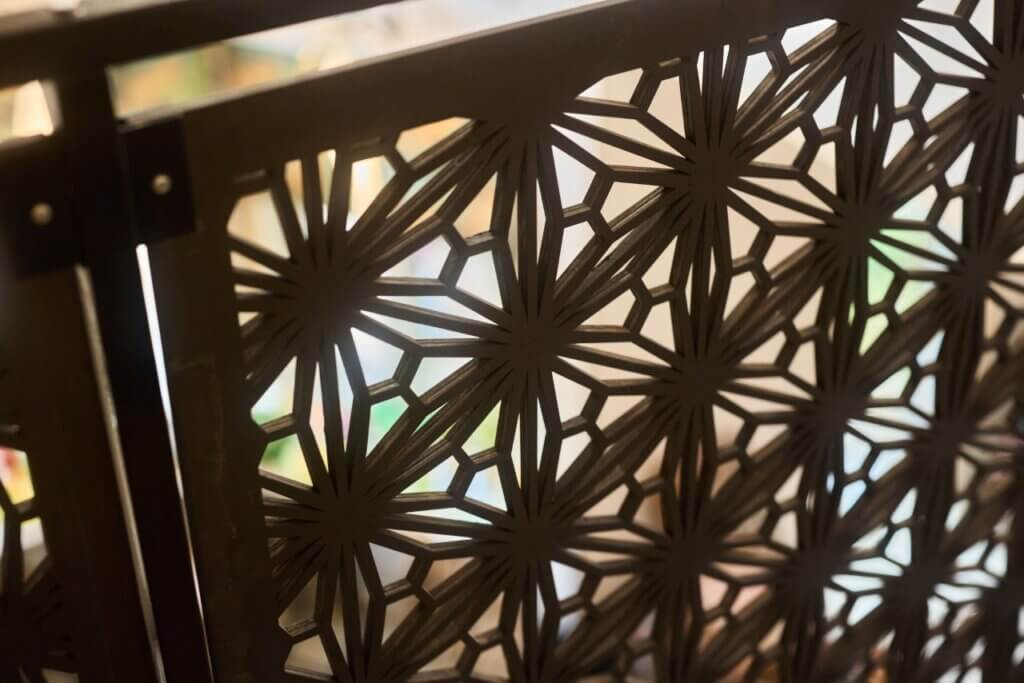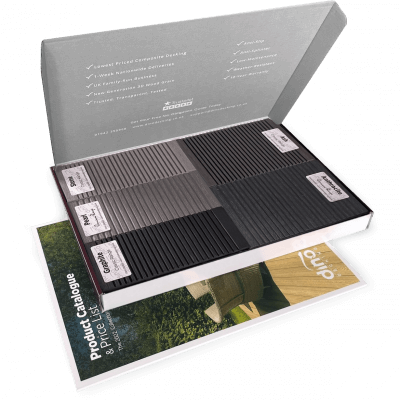5 Composite Decking Lighting Ideas
Our composite decking looks great in any setting, but you can really make your outdoor spaces shine with our decking
Products in Stock
Lowest Prices
Express Delivery
10-Year Warranty
Bank Holiday Weekend Sale. Up To 15% Off.

If you find yourself having to replace your garden screens every few seasons, there’s likely a very simple reason behind it: the materials you’re using simply aren’t steady and durable enough for the wind-prone UK climate. Rather than spending your money on endless replacements, finding the right material for your outdoor privacy solution can save you time, cash and frustration in the long run. Let’s take a closer look.
The British weather presents unique challenges for garden fixtures. From relentless rain and damp conditions to unexpected freezes and summer heat waves, your garden screen needs to withstand it all. Look for materials specifically rated for outdoor use that won’t warp, rot or discolour after exposure to the elements, such as composite materials.
How much time are you willing to dedicate to maintaining your garden screens? Some materials might boast impressive durability but require regular treatments or special cleaning to maintain their appearance and structural integrity. We’ve found that many homeowners prefer low-maintenance options that allow them to enjoy their gardens rather than constantly working on them.
Initial cost shouldn’t be your only consideration—think about the total cost of ownership. A premium screen that lasts 15-20 years may represent better value than a budget option you’ll need to replace every 2-3 years. When you’re calculating expenses, factor in not just the purchase price but also installation costs, maintenance supplies, and eventual replacement.
If you’re looking for the perfect trellis for your landscape, composite options provide stability and longevity while maintaining aesthetic appeal. Composite screens combine wood fibres and recycled plastic to create a remarkably durable product, offering the natural look of wood without the susceptibility to rot, insect damage or warping. You’ll find composite screens require minimal maintenance—typically just an occasional wash—and can last 20+ years in British weather conditions.
The blend of materials in composite screens makes them particularly resistant to moisture, which is essential for the UK climate.
Metal screens, particularly those made from aluminium, corten steel, or powder-coated iron, offer exceptional longevity. Modern manufacturing techniques have largely eliminated concerns about rust and corrosion. Aluminium stands out for its lightweight nature and inherent resistance to rust, while corten steel develops a protective patina over time that actually shields it from further deterioration.
These screens can easily last 25+ years with minimal care, making them one of the most durable options available. They’re also available in an impressive range of designs, from intricate laser-cut patterns to sleek, contemporary styles.
Not all wood is created equal when it comes to durability. Hardwoods like teak, ipe, and cedar naturally contain oils and tannins that resist rot, insects, and weather damage. These premium woods can last 15-25 years without treatment, though occasional oiling will extend their lifespan and preserve their natural beauty.
The aesthetic warmth of hardwood is unmatched, ageing gracefully with a silvery patina if left untreated. Many homeowners appreciate how these screens blend seamlessly with natural surroundings while providing robust privacy solutions.
Though technically a grass, bamboo offers surprising durability when properly treated. Quality bamboo screens can last 7-10 years outdoors, especially when the material has been properly dried, treated against insects, and sealed against moisture. There are various ways to use a garden screen made from bamboo, from creating zen-inspired dividers to tropical-themed retreats.
Reed screens provide a similar natural aesthetic but typically offer slightly less durability than bamboo. Both materials provide an eco-friendly option that brings a distinctive texture to your garden design.
For the ultimate in durability, concrete and stone screens are virtually indestructible. Modern manufacturing techniques have transformed these traditional materials into surprisingly versatile and even elegant design elements. Precast concrete screens can feature intricate patterns and textures while maintaining structural integrity for decades.
Natural stone options like slate or limestone can be incorporated into screens that will likely outlast all other elements of your garden design. While the initial investment is higher, these screens might well last a lifetime with zero maintenance requirements.

When weighing up your options, consider that composites offer the best balance of aesthetics, maintenance and longevity for most gardens. Metal provides unmatched strength but can sometimes lack the warmth of natural materials. Hardwoods bring unparalleled beauty but require some seasonal care. Bamboo and reed offer eco-credentials and a distinctive look but will need replacing sooner than other options. Stone and concrete provide permanence but at a higher cost and with less flexibility.
Your specific requirements will determine which advantages matter most—whether that’s the zero-maintenance nature of metal, the natural aging of hardwood, or the contemporary finish of composite.
Even the most durable screen will fail prematurely if poorly installed. Ensure posts are set deep enough, footings are appropriate for your soil type, and all components are rated for outdoor use. When you’re installing tall screens, consider wind loading—especially in exposed locations. Professional installation may add to initial costs but often prevents expensive problems later.
Simple maintenance dramatically extends screen life. Remove debris from around the base of screens where moisture can collect, clean surfaces according to manufacturer recommendations, and immediately address any damage. For wooden screens, check annually for signs of insect activity or rot beginning.
Many materials benefit from periodic retreatment. UV-protective coatings help prevent sun damage, while sealants protect against moisture ingress. When you’re applying these treatments, weather conditions matter—aim for dry, mild days for the best results.
Investing in durable garden screens transforms your outdoor space into a private sanctuary that requires minimal upkeep year after year. The ideal material balances your aesthetic preferences, maintenance tolerance, and budget constraints. By understanding the strengths and limitations of each option, you’ll make an informed choice that enhances your garden for years to come.
Remember that durability isn’t just about the material itself—proper installation, regular maintenance, and appropriate design choices all contribute to creating a long-lasting garden feature that continues to delight season after season.

Our sample pack contains a sample piece of each colour currently available. Order your free sample pack today to compare the colours and get a true feeling of the Dino Decking range!
Our composite decking looks great in any setting, but you can really make your outdoor spaces shine with our decking
If the idea of having rats under your decking makes you shiver, don’t worry. We’ll let you know the signs
Business hours
Monday: 09:00 – 17:30
Tuesday: 09:00 – 17:30
Wednesday: 09:00 – 17:30
Thursday: 09:00 – 17:30
Friday: 09:00 – 17:30
Saturday: Closed
Sunday: Closed
Contact us
01942 355968
support@dino.co.uk
Collection Address: Unit 1 Wetheral Close Hindley Ind Estate Wigan Greater Manchester North West WN2 4HS
Pages
Products
Testing
Copyright 2025 Dino Decking Ltd All Rights Reserved.
VAT Number: GB296097848.
Company Number: 10837233.